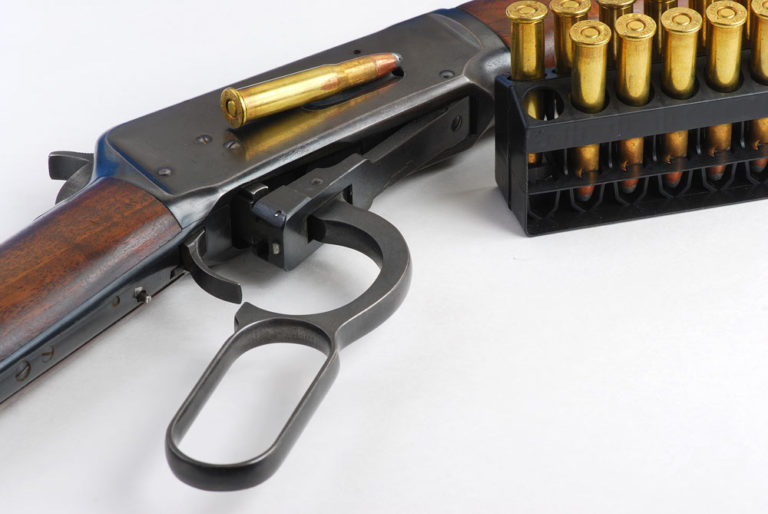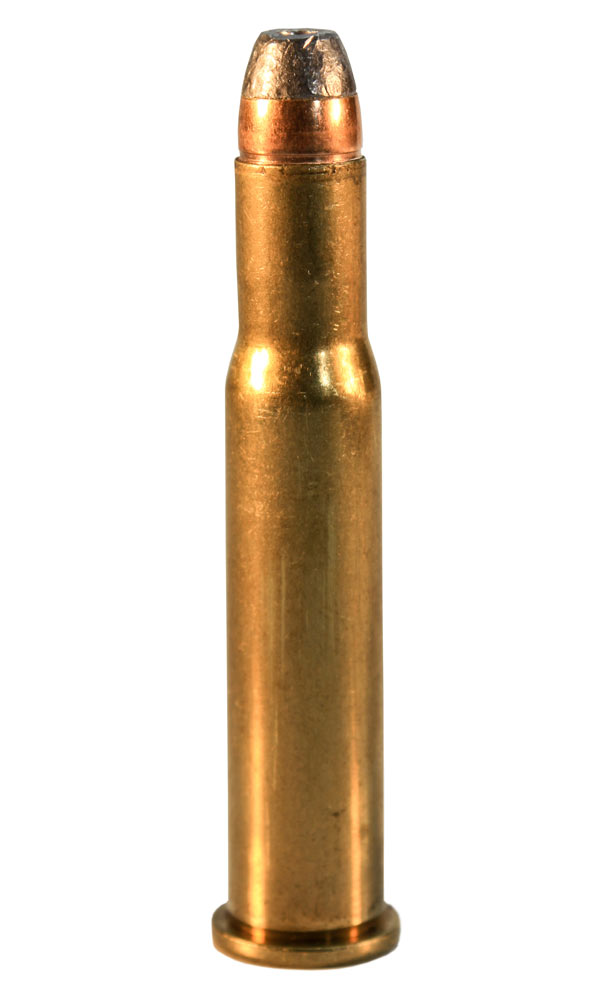

Introduced to the public in 1895 and mated up with the Winchester Model 94 lever action rifle, this duo was the most popular rifle and cartridge in North America for a long time. They are both still quite popular today.
The Model 94 was the first commercial rifle specifically developed for use with smokeless powder. Last count I had, more than 7.5 million had been produced and sold, the vast majority of which were chambered for the .30-30.
Other manufacturers have also manufactured rifles chambered for the cartridge. Two other lever action rifles, ones made by Marlin and the Savage Model 99 were available in .30-30. Mossberg also made a few lever action models for the cartridge.
Some single shot rifles have also been available in .30-30, most notably those made by Thompson-Center, and I believe that I've seen a Stevens and Savage single shot rifle so chambered.
Very few bolt-action rifles have been made for the .30-30 as the cartridge uses a rimmed case which is generally unsuited for bolt actions. A few did make their way to market though.
Early on, Winchester chambered its Model 54 bolt-action rifle for the .30-30, but it did poorly in the marketplace. Stevens and Savage produced a bolt-action model or two for the cartridge and the Remington Model 788 was also available for the .30-30.
The cartridge got its name from the fact that it had a bullet diameter of 30 caliber, and its original loading used 30 grains of smokeless powder. Although it has been factory loaded for an assortment of bullet weights from 110 grain to 170 grains, plus an assortment of cast bullet weights are available for it, the 150-grain and 170-grain factory loads are the most popular.
Until the introduction by Hornady of the Leverevolution bullet, all bullets intended for the cartridge were either flat-nosed or round-nosed in design and construction. This was caused by safety concerns with the tubular magazines of the Winchester and Marlin lever action rifles.

It has been a very popular round for deer hunting in the eastern US, and equally popular in the western US as a saddle gun/pickup truck gun. Lever action Winchester model 92s and 94s were popularized in Hollywood western movies, which, I suspect, had much to do with its overwhelming acceptance. The compactness, lightweight, and very modest recoil, of most rifles chambered for the .30-30 also had a great deal to do with its popularity.
Even though the cartridge is loaded to modest velocities, these days the 150 grain around 2,400 fps, the 160 grain around 2,300 fps, and the 170 grain at 2,200 fps, it is perfectly adequate for moderate range hunting for animals the size of deer and black bear.
I would estimate that Canadian hunters have taken a ton of moose and caribou with it. It is difficult to make a satisfactory argument with success, although I wouldn't personally take one on a moose hunt unless it was all that I had. There are better choices.
I have two friends of mine that have Thompson Center handguns chambered for the .30-30, and they are superbly accurate. They use handloaded ammunition with pointed boat-tail bullets in their single shot TCs, and they are as scary accurate as any rifle I've come across, and more so than most.
One of these days when I have nothing better to do and a few extra bucks in my pocket, I'll pick up a TC Contender rifle chambered for the .30-30 just to see how well I can make it shoot. I'd almost bet that groups in the .2s are achievable. It'll be fun to find out.
I don't have a lot of experience with TC rifles, having owned but one, but the seem to be exceptionally accurate. The two that my friends own chambered for the .30-30, and my rifle chambered for the .338 Federal, are all capable of teeny tiny groups.

Next Step: Get your FREE Printable Target Pack
Enhance your shooting precision with our 62 MOA Targets, perfect for rifles and handguns. Crafted in collaboration with Storm Tactical for accuracy and versatility.
Subscribe to the Gun Digest email newsletter and get your downloadable target pack sent straight to your inbox. Stay updated with the latest firearms info in the industry.

![Best Concealed Carry Guns In 2025 [Field Tested] Wilson Combat EDC X9S 1](https://gundigest.com/wp-content/uploads/Wilson-Combat-EDC-X9S-1-324x160.jpg)


![Best 9mm Carbine: Affordable PCCs [Tested] Ruger Carbine Shooting](https://gundigest.com/wp-content/uploads/Ruger-Carbine-Shooting-100x70.jpg)
![Best AR-15: Top Options Available Today [Field Tested] Harrington and Richardson PSA XM177E2 feature](https://gundigest.com/wp-content/uploads/Harrington-and-Richardson-PSA-XM177E2-feature-100x70.jpg)

I agree with this article wholeheartedly. .30-30 was my first rifle for hunting deer in the Upper Peninsula of Michigan and has served me well for many years. While I have a variety of firearms, from 5.56mm to magnum .30 cals, my old Marlin .30-30 is still my go to rifle for Michigan brush hunting for deer.